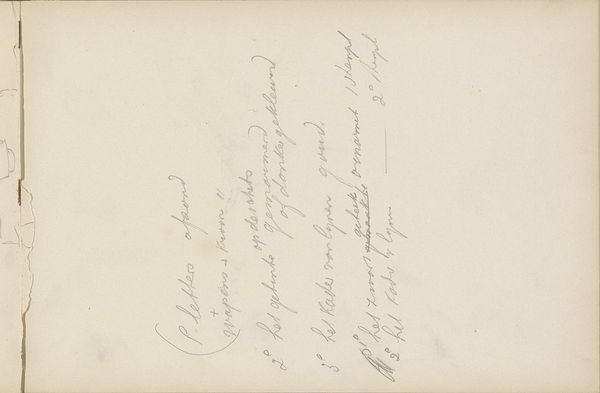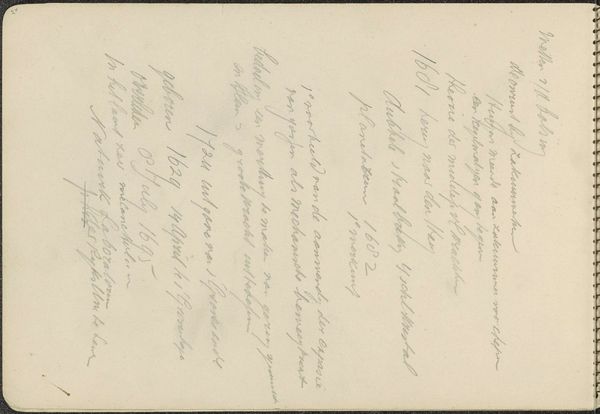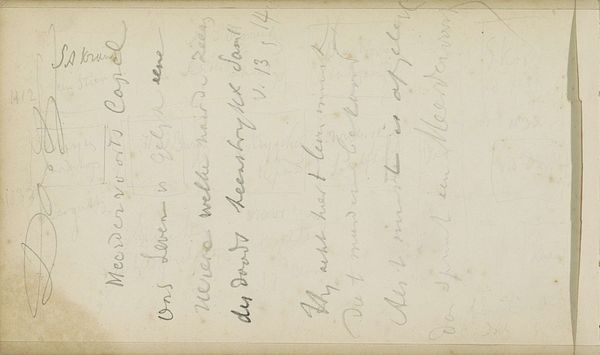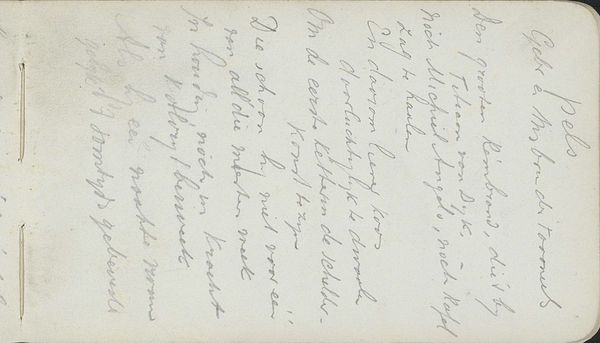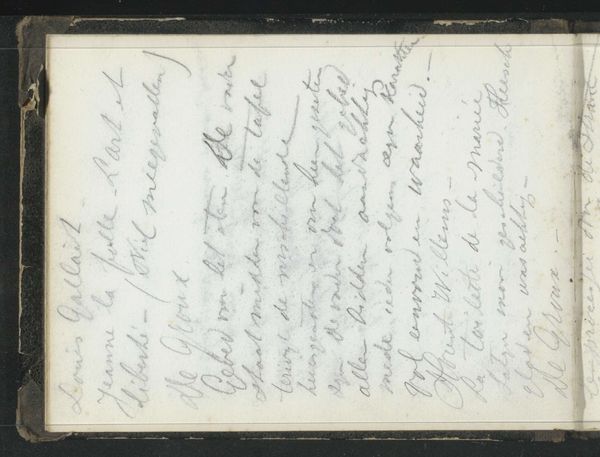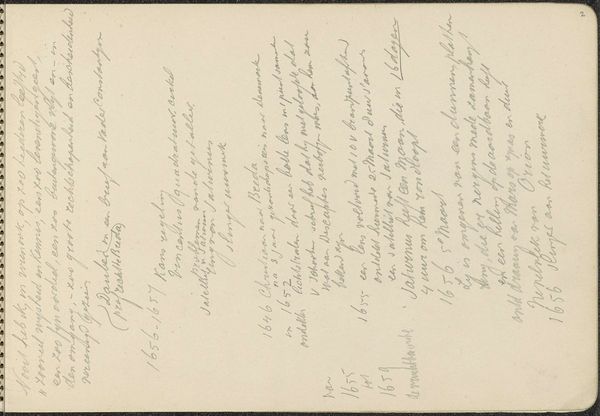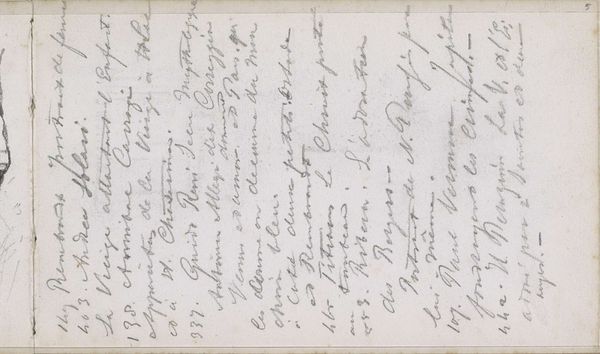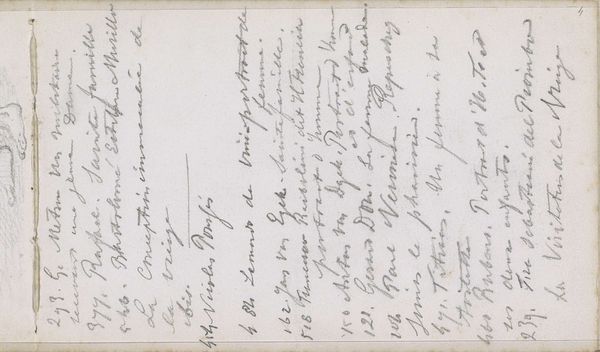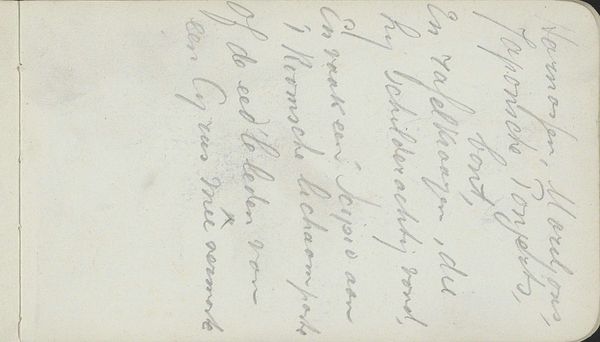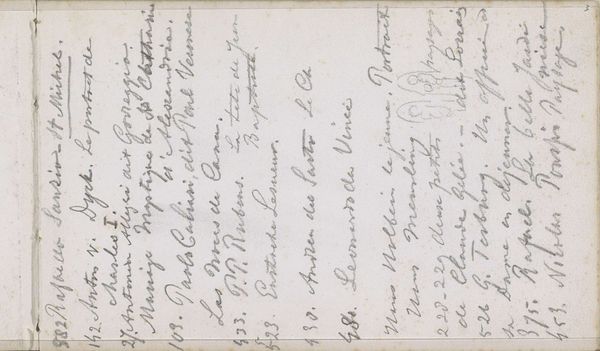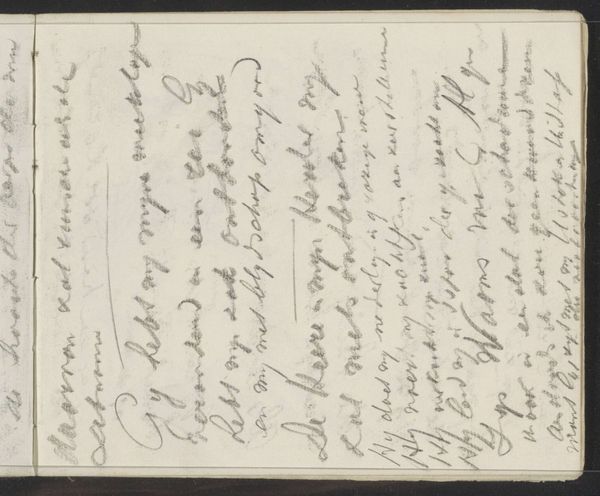
Fragment uit een brief van Christiaan Huygens aan Constantijn Huygens jr. c. 1934s
0:00
0:00
careladolphlioncachet
Rijksmuseum
drawing, textile, paper, ink, pen
#
drawing
#
script typography
#
hand-lettering
#
old engraving style
#
hand drawn type
#
hand lettering
#
textile
#
paper
#
personal sketchbook
#
ink
#
hand-drawn typeface
#
pen-ink sketch
#
pen work
#
sketchbook drawing
#
pen
#
calligraphy
Copyright: Rijks Museum: Open Domain
Curator: We're looking at "Fragment uit een brief van Christiaan Huygens aan Constantijn Huygens jr." a drawing dating from around the 1930s by Carel Adolph Lion Cachet, currently held in the Rijksmuseum. It’s rendered in ink on paper, capturing a handwritten letter fragment. Editor: It strikes me as intimate, like peering over someone’s shoulder as they jot down a private thought. The script feels so personal, vulnerable almost, despite being a reproduction. There’s an interesting tension between the historical distance and the immediacy of the handwritten form. Curator: Absolutely. The script's formal qualities are remarkable— the controlled yet fluid strokes of the pen creating a consistent rhythm across the page. The layout itself, though dense with text, maintains a visual harmony through its structured arrangement. It elegantly merges the practical need for communication with aesthetic consideration. Editor: I see that, and yet, knowing this is a fragment of a letter between two figures, Christian and Constantine Huygens – figures deeply involved in the scientific and cultural milieu of their time – one can't help but wonder about the power dynamics embedded in this exchange. How much of Cachet’s later interpretation plays into the cultural lens of looking back at a time of great scientific revolution and the exchange of learned ideas? Curator: That’s a compelling point. While the handwriting exudes a certain elegance and sophistication, the content, being a reproduced fragment, lacks the direct emotional weight of an original personal document. This allows us to concentrate on the design itself, the deliberate use of calligraphy as an artistic expression rather than simply a functional form of communication. Editor: And Cachet chooses to spotlight a letter that isn’t even his own; but recreates the intimate correspondence through drawing – adding himself and his craft into the existing conversation. Perhaps highlighting both men’s shared interests across mathematics, physics, and astronomy; maybe to highlight his connection to their legacies in his hand. Curator: The artistic intervention transforming text into image allows us to see language itself as a material, as shape and form rather than solely as meaning. Editor: Ultimately, this "Fragment" draws our attention to not just what was said, but how voices from the past continue to speak.
Comments
No comments
Be the first to comment and join the conversation on the ultimate creative platform.
